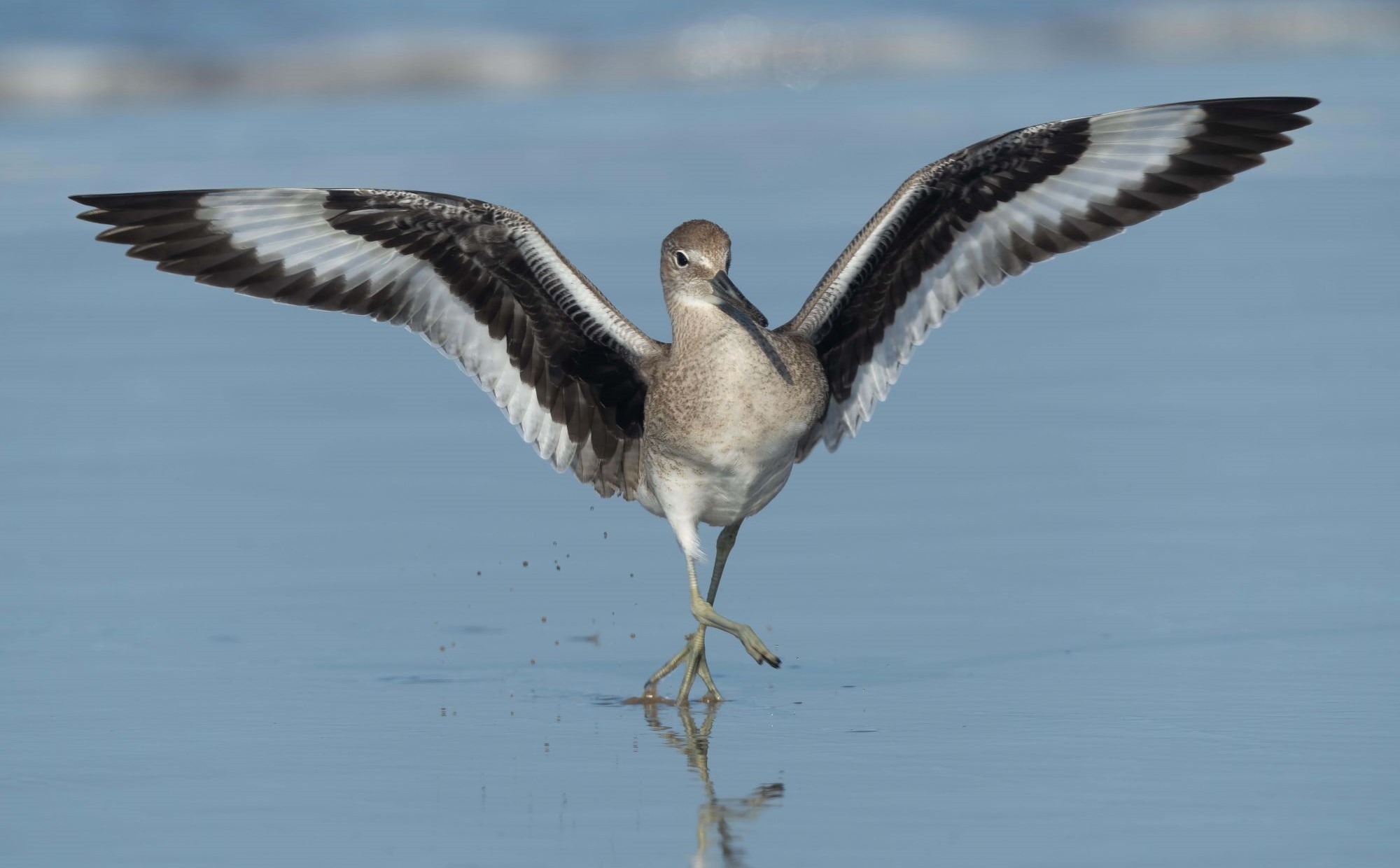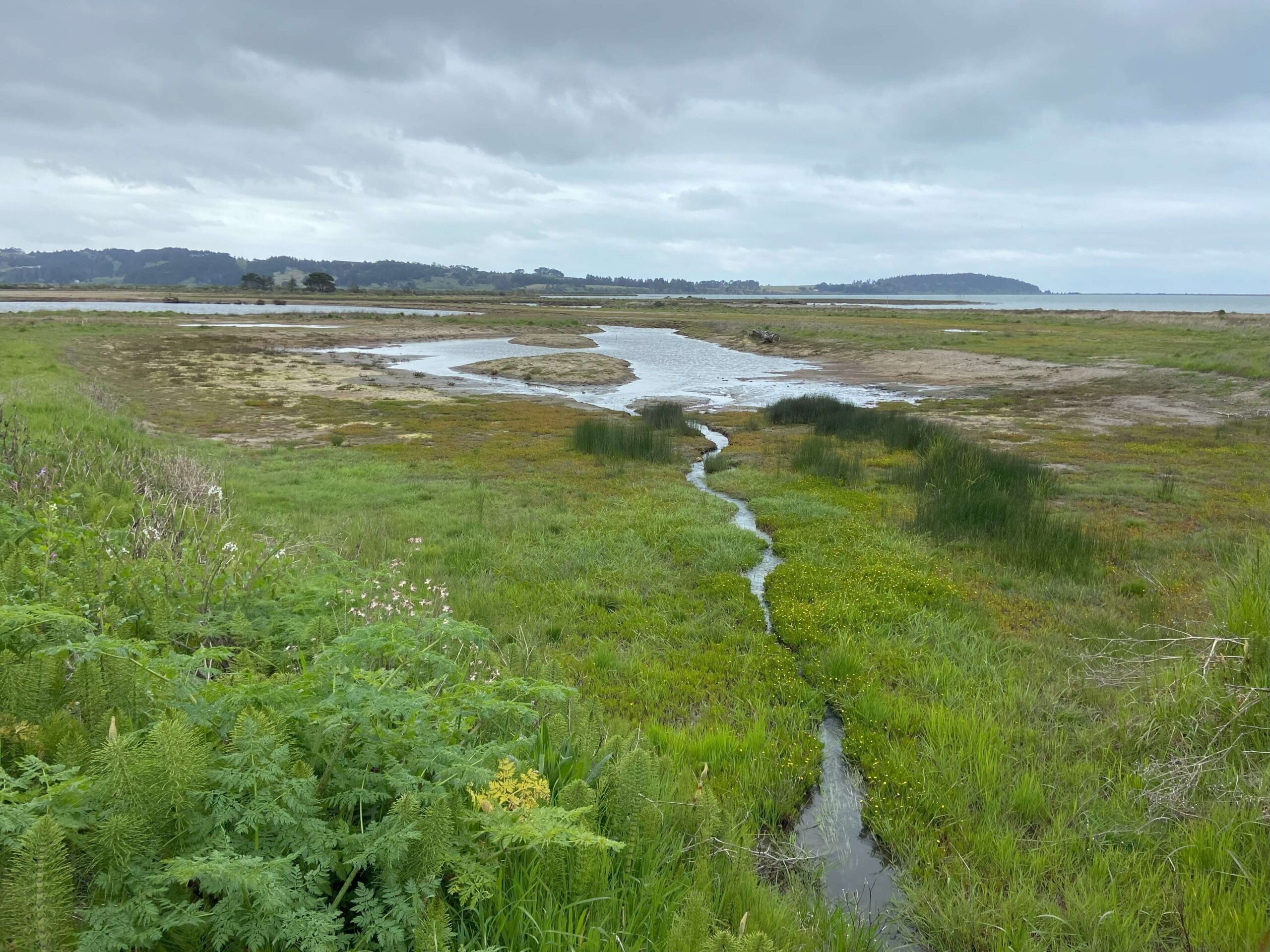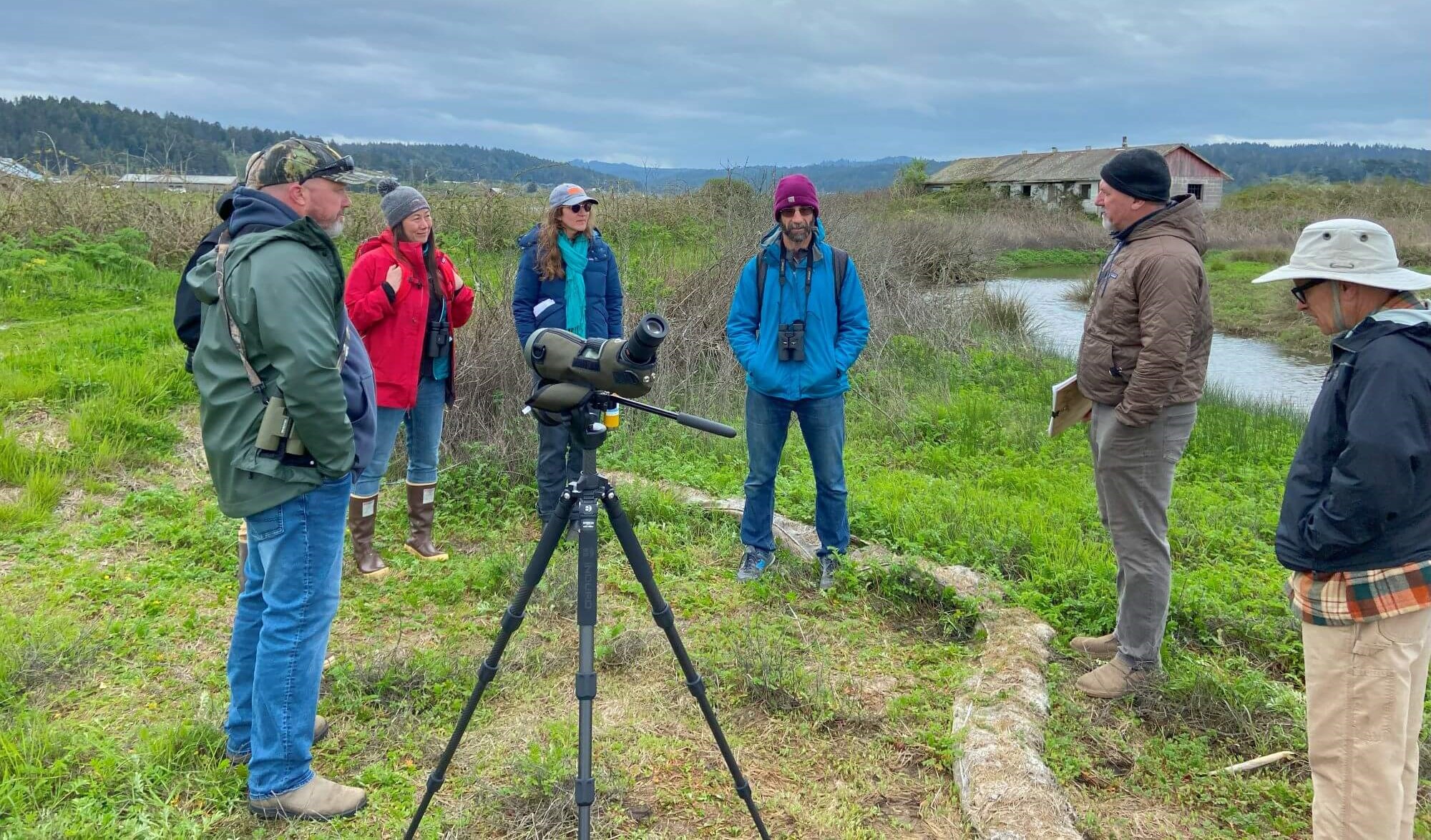
The Threat of Sea Level Rise
Sea level rise is one of the slow but imminent threats of climate change, putting communities, critical coastal habitats, and coastal industries at risk. It’s not all bad though, as communities and conservationists are working to address sea level rise before it’s critical. Building coastal resilience by restoring wetlands and coastal habitats is one big way to mitigate the impacts of sea level rise, while also protecting human communities and wildlife. But to achieve this, wetland managers and conservationists must have the tools necessary to implement effective restoration. The White Slough restoration project provides just that – a successful model for other coastal areas looking to restore wetland habitats.
Humboldt Bay
Along the Northern coast of California is Humboldt Bay, the largest estuary on the Pacific from Coos Bay in Oregon to San Francisco. This complex ecosystem and biodiverse natural resource is home to over 100 plant species, 300 invertebrates, 100 fish species, and around 200 bird species. Additionally, the ecosystems of Humboldt Bay provide habitat for migratory birds to breed, rest, refuel, and overwinter, provide tourism and recreational opportunities for local communities, and support economic and commercial activities.
One of the many habitat types in Humboldt Bay, salt marshes are coastal wetlands that are flooded and drained with salt water brought in with the tide. Often with a base of deep mud and peat, they provide a nursery, feeding, and refuge habitat for many fisheries species, young fish, and birds, in addition to storing carbon and buffering the shoreline. In the late nineteenth and early twentieth centuries, significant diking and filling of the tidal wetlands in Humboldt Bay reduced salt marsh coverage from around 9,000 acres to the mere 900 remaining today. The wetlands faced further degradation from agriculture and urbanization, industrial and recreational activities, and invasive species.

White Slough
White Slough is a diked area of the Humboldt Bay National Wildlife Refuge, which historically hosted tidal wetlands and salt marsh habitats. Increased wave action, sea level rise, and erosion over time resulted in high tides flooding the marsh, bringing in salt water and threatening to convert the marsh to mud flats. Further, the disconnect from Humboldt Bay and the lack of natural sediment coming in, combined with a history of grazing animals compacting the once-spongy soil, reduced the overall marsh elevation by three feet compared to its natural levels, increasing its susceptibility to flooding. Together, these elements left both the marsh and nearby roadways at risk and posed a larger issue in light of sea level rise, ultimately encouraging land managers to act quickly.
Completed in 2021, the tidal marsh restoration project at White Slough serves as a model for how other land managers can address sea level rise, improve coastal resiliency, and restore wetland habitats at once. Spanning five years, the project involved partners from across agencies and a healthy dose of creative problem-solving to ensure the project was a success. The project began by raising the land surface enough to support healthy marsh vegetation and breaching the dilapidated dike to restore tidal flow, while also taking care to maintain roosting habitat for birds. Removing the dikes was a critical part of the project, allowing natural sedimentation processes to occur which helped build and maintain the elevation of the marsh.

The Challenges & the Project Today
The project was not without challenges, however, including sourcing fill material for the marsh. Fortunately, the Salt River Restoration and the Martin Slough Restoration projects nearby were removing sediment to reintroduce the tides, and funding was secured to bring that sediment to White Slough for a second life. Salt River sediments included invasive reed canarygrass and had to be buried under clean sediment, while Martin Slough sediment, which came from the City of Eureka’s municipal golf course, was full of golf balls! But those problems were manageable and these sediment sources allowed the team to complete the project in a cost-efficient way. Further funding from grants and support from partners was another critical piece of this puzzle.
As of 2023, when staff from Pacific Birds visited the site with partners and board members, spring shorebirds abounded – including Willets, Dunlin, Long-billed Curlews, and Marbled Godwits, and the marsh was thriving. The restoration project maintained existing and increased roosting habitat for the shorebirds, resulting in an influx of birds using the habitat regularly. While the habitat was still recovering and vegetation growing, seeing so many birds was encouraging for all in attendance.
The restoration of 41 acres of marsh has had a host of benefits not only for birds but also for the safety of local communities. It created a buffer between the ocean and roadway and restored the shoreline, which reduced the risk of dike failure and flooding for the adjacent 101 freeway. The project also restored ecosystem function to the marsh and improved the overall resilience of the habitat to sea level rise by bringing it back toward historical elevations and allowing for ongoing sediment deposition.

Waves of Benefits
The restored habitat also supports a diversity of shorebirds, migratory birds, and other wildlife that rely on marsh habitats to rest, refuel, breed, and overwinter. Some birds, like the greater yellowlegs and great blue heron, wade through the marshlands feeding on small fish and invertebrates, while others like the osprey glide high above, scoping out larger fishes before diving down into the marsh. While they may not seem like it at first glance, salt marshes are safe havens for young fish and shellfish, in addition to other wildlife that lives among the peat and plants. Further, healthier marshes mean cleaner waters flowing from land to sea, as marsh plants help break down and recycle nutrients and remove pollutants.
Outside of these more direct impacts, the completion and success of a beneficial sediment reuse project has provided a template for other communities and organizations looking to plan for sea level rise and restore wetland habitats. It illustrates the way the economy, the community, and the natural world can all benefit when we begin to address climate change and sea level rise from a holistic perspective. While restoration projects may protect birds and other wetland-reliant wildlife, the White Slough project shows that the benefits of habitat restoration stretch far beyond birds.
Learn more about the project:
- A model for the future | U.S. Fish & Wildlife Service
- White Slough Wetlands Enhancement – Humboldt County Resource Conservation District (humboldtrcd.org)
- The White Slough Tidal Wetlands Restoration Project - The Fishing Wire
- Humboldt Bay restoration project enhances critical habitat diversity – Times-Standard
